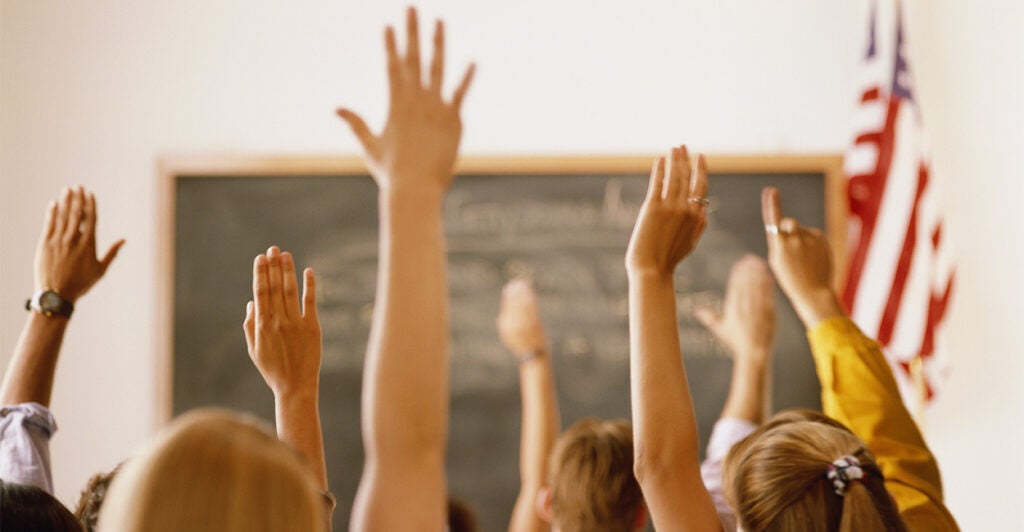Critics of school choice often say it leads to higher tuition at private schools, but that doesn’t actually happen, a new study has found.
To the contrary, the study by The Heritage Foundation found that school choice significantly held down the cost of tuition of private elementary schools and had no impact on tuition at private high schools. (The Daily Signal is the news outlet of The Heritage Foundation.)
Over the past 10 years, states that adopted school choice policies had lower rates of tuition increases than states that never had school choice policies. When adjusted for inflation, the cost of tuition rose more slowly in states that had previously adopted school choice. States without school choice had an average 27.6% increase in tuition, while states with school choice saw a 15.4% increase, the study found.
The vast majority of Americans support school choice, polls find. According to a RealClear Opinion Research poll from late June, of 1,000 registered voters surveyed, 71% supported school choice, while just 13% opposed it.
Many Republicans governors, among them Ron DeSantis in Florida, Sarah Huckabee Sanders in Arkansas and Glenn Youngkin in Virginia, have campaigned in support of school choice and parental rights.
“Republicans are working to end the policy of trapping kids in failing schools and sentencing them to a lifetime of poverty,” Sanders said. “We will educate, not indoctrinate, our kids and put students on a path to success.”
Thus, supporting school choice policies has been a winning strategy for many politicians who take account of parents’ desire to have more control over their child’s education.
“[Democrats have] lost our advantage on education,” Jorge Elorza, the CEO of Democrats for Education Reform and a former mayor of Providence, Rhode Island, wrote in an August opinion column for USA Today, conceding that school choice resonates with voters.
Some opponents of school choice contend that subsidies encourage K-12 schools to increase tuition as it does for colleges. But unlike higher education, K-12 schools typically have fewer barriers to entry, and therefore a higher capacity to serve more students, and the supply can increase more quickly than demand, according to the study.
Have an opinion about this article? To sound off, please email letters@DailySignal.com, and we’ll consider publishing your edited remarks in our regular “We Hear You” feature. Remember to include the URL or headline of the article plus your name and town and/or state.
